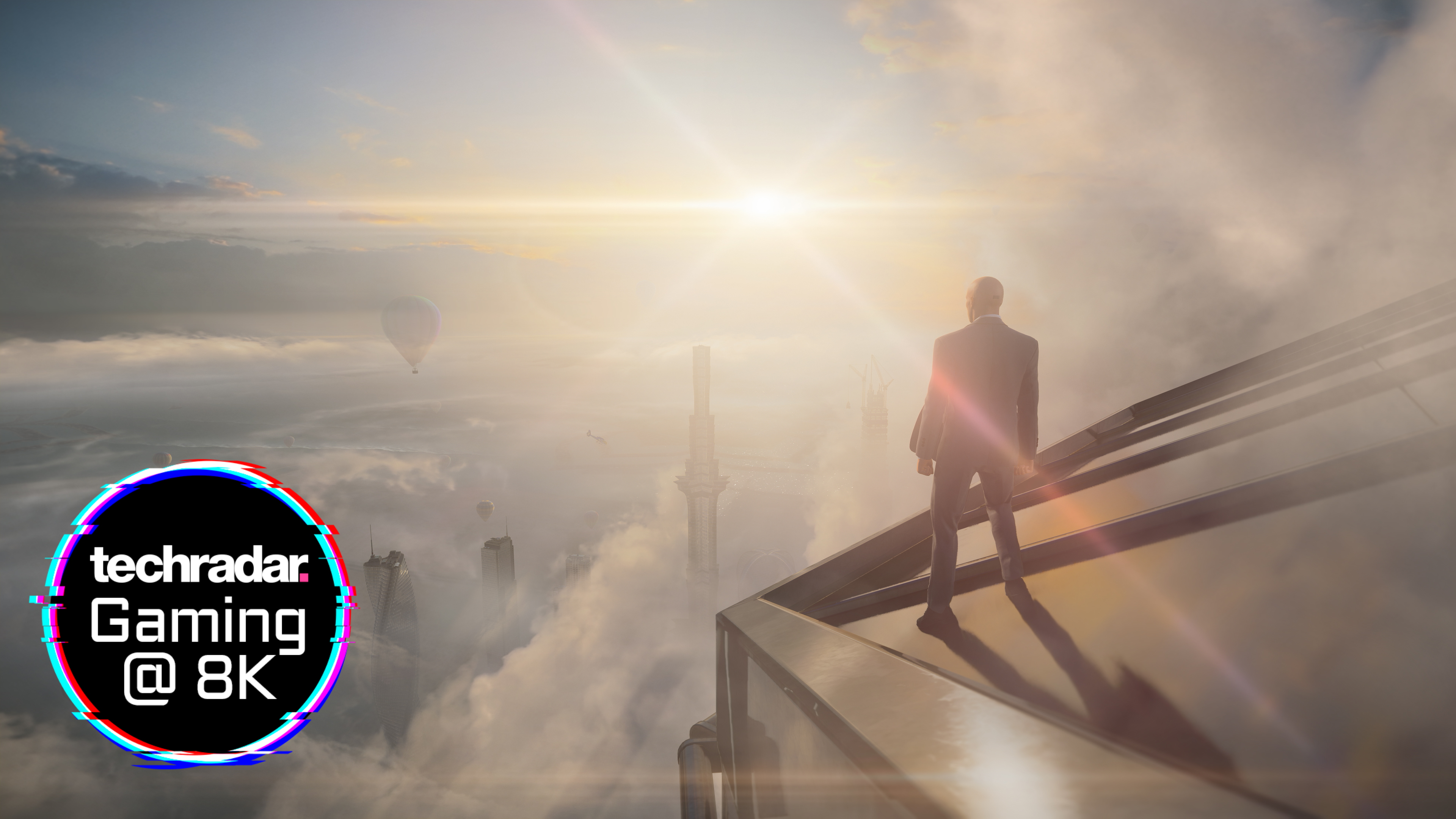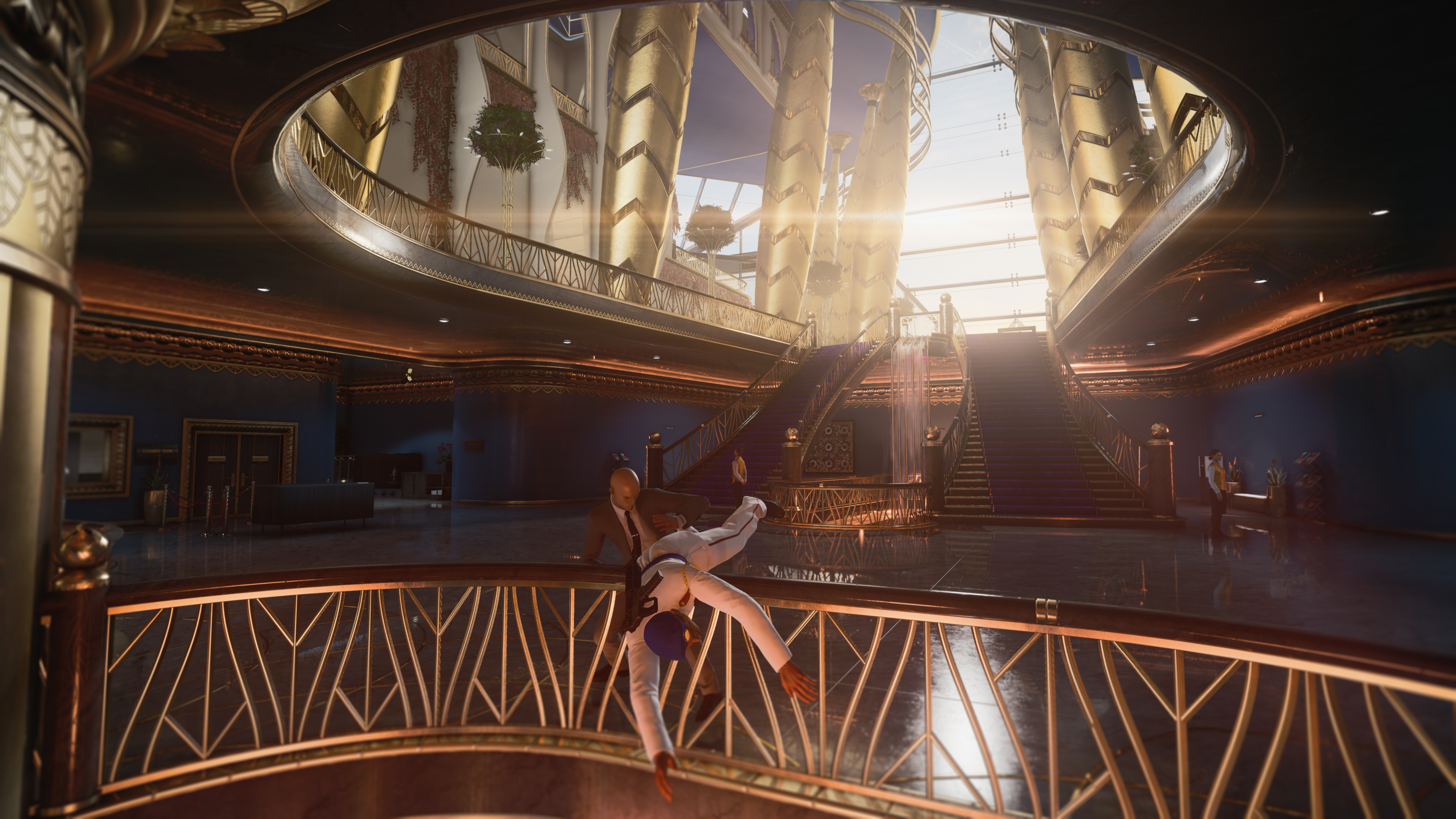Hitman 3 at 8K is almost perfection thanks to Nvidia DLSS
Ray traced carnage

PC built by Chillblast
Motherboard: Asus ROG STRIX Z390-E GAMING
CPU Cooler: Noctua NH-U14S
Case fans: Noctua NF-A14 PWM Chromax 140mm
Processor: Intel Core i9-9900K, 8 Cores / 16 Threads
GPU: Nvidia GeForce RTX 3090
Storage: 500GB Samsung 970 EVO Plus M.2 PCIe
Secondary Storage: 2TB Samsung 860 QVO
Power: Corsair RM850x 80 PLUS Gold 850W PSU
Case: Fractal Design Vector RS Tempered Glass
RAM: G.Skill Trident Z RGB 32GB DDR4 3200MHz
Screen: LG 55NANO966PA
Hitman 3 is now a few years old, but it remains one of the best PC games you can play right now (and it's also available on consoles if you like that sort of thing). Not only has the tightly-constructed gameplay stood the test of time, offering large yet intricate levels that allow you to take down targets in all kinds of imaginative ways, but the developer, I/O, has kept updating the game with new missions, levels, and features.
The most exciting update for PC gamers in ages has recently dropped, offering support for ray tracing lighting and reflection effects, as well as Nvidia DLSS support and AMD FSR.
These two technologies have been essential for helping gaming laptops and PCs play ever-more ambitious games while maintaining (or even improving) performance.
In the past, they have also helped me achieve 8K gaming at playable frame rates - something even mighty cards like the Nvidia RTX 3090 have struggled with.
So, with this latest update, I've fired up Hitman 3 once again (to be fair, I don't need much of an excuse to play it) on my 8K machine to see how great the game looks (and maybe even plays) at the demanding 7680 × 4320 resolution.
Once again, I'm using the LG 55NANO966PA 8K TV for testing, an excellent set that makes 8K achievable.
Target identified
Hitman 3 was a good-looking game when it launched, with detailed environments populated by believable NPCs (non-player characters) that have varied animations that helped give each level a realistic feel.
Sign up for breaking news, reviews, opinion, top tech deals, and more.
So, even though it's a few years old, the game is still a demanding beast for PCs.
Playing it at its highest graphical settings at either Ultra or High presets, but no ray tracing or DLSS, Hitman 3 hit a respectable 30.13fps at native 8K.
That just hits the 30fps threshold that we consider to be playable. It certainly looks fantastic, and while it's playable, there's no doubt that 30fps feels sluggish these days.
So, we turned on DLSS to its Ultra Performance setting, and instantly the frame rate doubled, with an average of 58.74fps. If you're not aware of DLSS, then this will seem like some sort of sorcery.
Spoiler alert: it kind of is. Basically, it's Nvidia tech that uses compatible RTX GPUs that run a game at a lower resolution, then uses AI and machine learning to upscale the game to a higher resolution. This is less demanding on your PC than running the game at a native resolution, and it when implemented well, there's little negative impact on image quality.
The power of DLSS is clear here, as it lets Hitman 3 go from just about playable at 8K, to running brilliantly at upscaled 8K. While there are some graphical abnormalities - some of the finer details and glass reflections look a bit off, it means Hitman 3 both looks and runs brilliantly at 8K.
For non-8K gamers, DLSS can help make Hitman 3 run even better on your machine. So, if you have an older laptop that struggles to run Hitman 3 at 1080p, DLSS could be a huge benefit – though only if you have a relatively modern Nvidia GPU. Still, DLSS once again proves to be a brilliant addition, and probably the best new feature that's come to Hitman 3.

What about ray tracing?
Ray tracing is another headline feature that's come to Hitman 3. Ray tracing is a way of showing realistic lighting and environmental effects that can make games feel even more immersive. When done well, they can be truly game-changing.
They are also very demanding when it comes to GPU power. Turning off DLSS, but turning on all ray tracing effects at 8K saw the framerate plunge to an abysmal 6fps. That's about as playable as a particularly boring slideshow.
Again, DLSS comes to the rescue, as turning it on bumps the frame rate to 32.64fps. So, ray tracing still halves DLSS performance at 8K, but at least the game is playable now, and it allowed me to experience the improved lighting effects.
The annoying thing about ray tracing in Hitman 3 is... it's really good. The flashes from gunfire light up the room, while candles and fireplaces look incredibly realistic, lighting up objects and casting shadows in a way that really draws you in.
Sunlight and other environmental details are really boosted as well, making an already realistic and vibrant game world look even more impressive. Why is this annoying? Well, if it didn't make such an impact, I could easily say that ray tracing just isn't worth the performance hit. However it does look bloody great, almost enough for me to consider playing the game at 30fps. Almost.
The great thing about PC gaming is that you have plenty of options to tweak, so lowering graphical details, or turning off some ray tracing effects, will help boost performance without any drastic impact to image quality.
Like an increasing number of games, you can also choose to use AMD's FSR (FidelityFX Super Resolution) upscaling technology, which is similar to DLSS. However, it doesn't use machine learning or AI, and it's available for more GPUs. As well as AMD cards, Nvidia GPUs can use it as well, including older graphics cards from Team Green that don't support DLSS.
So, FSR is a great alternative. However, in Hitman 3, it's not quite as good, giving me 23.92fps on average at 8K with ray tracing on.
Is Hitman 3 worth playing at 8K?
Hitman 3 at 8K is a great experience, though you really need DLSS to get it to around 60fps. Playing this game at that resolution, with a relatively solid frame rate is really impressive.
However, it does mean playing without ray tracing effects, unless you want to play at 30fps, a big ask if you've spent a lot of money on a powerful graphics card. Ray tracing brings some incredible visuals to Hitman 3, and really helps add to the atmosphere, so playing without them feels too much like a compromise.
Dropping the resolution down to 4K, with DLSS on, allowed me to play Hitman 3 at ultra graphics settings with all ray tracing effects on, while hitting 64.14fps. The impact on image quality wasn't really noticeable either, as games still mainly rely on 4K assets and art work. This will change in the future, but for now it proves that while gaming at 8K is an exciting taste of what's to come, 4K is still the sweet spot for high-end graphics cards.
- These are the best GPUs of 2022

Matt is TechRadar's Managing Editor for Core Tech, looking after computing and mobile technology. Having written for a number of publications such as PC Plus, PC Format, T3 and Linux Format, there's no aspect of technology that Matt isn't passionate about, especially computing and PC gaming. He’s personally reviewed and used most of the laptops in our best laptops guide - and since joining TechRadar in 2014, he's reviewed over 250 laptops and computing accessories personally.